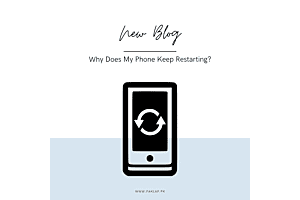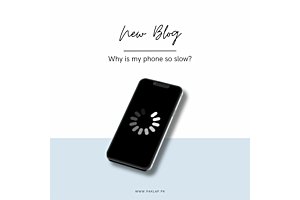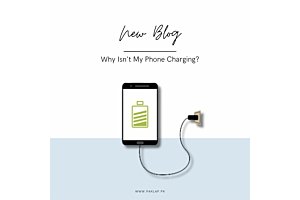OLD WATCHES vs SMART WATCHES
Mankind’s earliest development is keeping track of time and it has come a long way. Around 1500 BC, ancient Egyptians considered sunlight as their basic unit of time and according to that, invented ‘Sundials’. Its structure includes a tall and slim stone placed above a circular horizontal disc on which numbers were written. On whichever number the tall stone’s shadow falls, would be the time of the day. However, this way of determining time lacked accuracy, for example; if it’s a cloudy day, sunlight falling on the ground would be less, resulting in inaccurate results. Moreover, sundials would not work during nighttime.
Soon, in the 16th century, the need for measuring time independently of the sun gave rise to various devices, most notably, sandglasses, water clocks and candles. Yes! Now we know candles can not only be used to lighten up but also to measure time as people from China to England used the steady fall in the height of the candle to have an estimate of time. But these three objects could only measure a limited amount of time before having to be reset, and because of this, they were used to measure the total period of a certain activity, like speeches.
Benedictine monks had specific timings of their prayers and used to inform people by ringing clocca (bell). The word ‘clock’ is derived from the Medieval Latin word, clocca. European mechanical clocks started appearing in the 13th and 14th century but their workings changed when in the 17th century, pendulum clocks were invented. In Italy, the principle of pendulum clocks was discovered by Galileo Galilei.
Towards the end of 1656, a Dutch mathematician, Christiaan Huygens made a pendulum clock. A year later, the pendulum clock was made in the Netherlands by Salomon Coster as he had obtained exclusive rights to make Huygens’ clock. In about 1670, the clockmaker of the French king, Isaac II Thuret, made a clock with a dial that showed hours, minutes and seconds.
That’s how the technology changed from a device that was dependent on sunlight to a devise that was absolutely independent on elements of weather, especially sun. Next step in making clocks easy to carry and accessible was making wrist watches.
According to Guinness world records, the first wrist watch was made by the Swiss watch manufacturer, Patek Philippe in 1868. The need for wrist watches perceived when in 1880, a German officer told the difficulties of using a pocket watch when triggering an explosive.
He also gave a solution to his problem; attaching pocket watch to his wrist. On request of the military, production of small timepieces, that were attached to bracelets, started in Berlin.
It’s surprising to know that watches were a weapon for soldiers which were used to bring unity to their actions. It can still be used to plan an attack. But today, watches are used for completely different uses such as for punctuality and even as an accessory, simply just to look good! It is amazing how watches have turned from a weapon to an accessory.
Addition of different designs, colors, metals such as gold and silver made watches seem attractive and a valuable accessory. Our whole life now revolves around clocks and watches. It has become from a ‘want’ to a ‘need’. It now symbolizes unity such as, at a specific time of school, meetings,matches,or even TV shows, a group of people would be doing the same thing.
From sundials to wrist watches, it is technology that has made watches become better and better by introducing new features to it. In today’s world, the latest watches are the Smart watches.
The history of smartwatches goes far behind then we think. A lot of companies paved its path of development by trying to computerize wrist watches as much as they can and by introducing new features which would allow the user not only just to see what time it is but to carry out other functions as well.
Seiko is one of the very first companies to have introduced smart watches. In 1983 Seiko launched T001 which had a feature of setting an alarm. In 1990, Casio released watches that could monitor steps taken or the distance traveled. In 1991, the BP400 launched, which could even monitor blood pressure and heart rate. Then in 1994, Casio launched Vive-100, which had an antenna that could detect a phone's notification and notify the user.
Later, Timex collaborated with Microsoft to make smartwatches that could store data like phone numbers, connect with the user’s computer wirelessly, to synchronize contacts and even appointments. The first company to release a smartwatch which had the feature of telecommunication was Samsung. In 1999, it launched SPH-WB10, whose features included an LCD screen, microphone, speaker and 90 minutes of talk time.
Microsoft introduced ‘Smart Personal objects Technology’ (SPOT) smartwatch but due to some reasons it could not survive in the market. Omega, in 2013 designed a smartwatch that could use maps, make calls and use android apps.
Apple’s smartwatch changed the game completely. In 2015, Apple’s smartwatch was on the number one bestselling smartwatch’s list. Since then, every year Apple has released an updated version of its design and features.
These Apple watches give alerts when the user have a high or a low heartbeat. It can connect to the internet, any IPhone and can receive calls and messages. Many people are forced to buy them because of its appearance; slim metallic body and bands that are available in many colors.
Smartwatches have most of the important features of a mobile phone and many people consider taking their smartwatches then mobile phones, when going outside. It can be quite useful for people of old age and people with heart problems as it keeps track of heartbeat.
Not just this, it is really useful for people who are fitness conscious or want to lose weight, as it counts the number of steps taken or amount of calories burnt. The results that the smartwatch shows after every workout can be really motivating. But with so many features, smartwatches are really expensive and majority of the people would not like spending their money on it and instead would go for a simple watch which is relatively available at much cheaper rates.
As smartwatches include a screen, it could be harmful for the eye and so, many people would not want to wear it.





